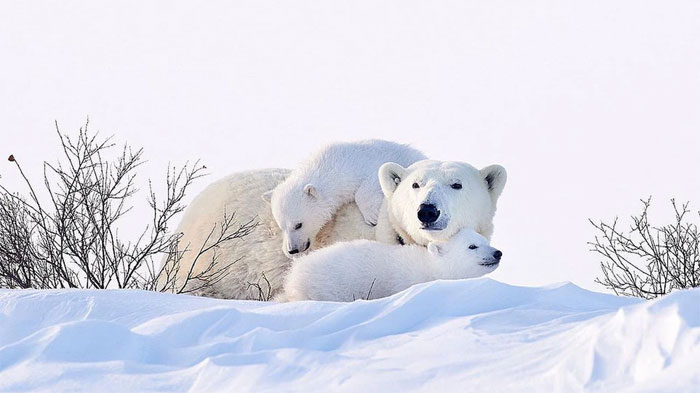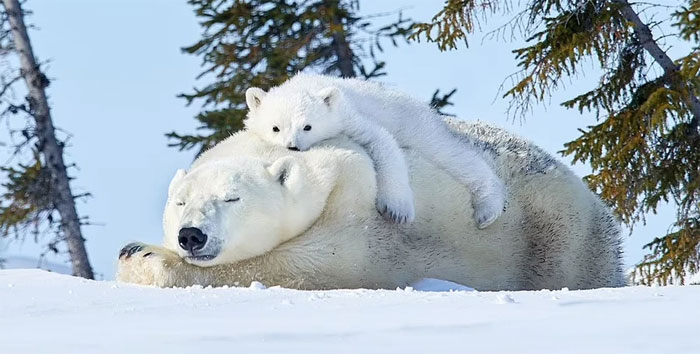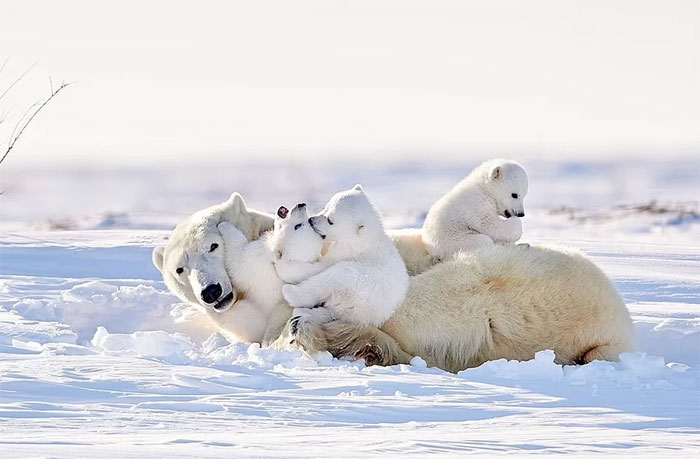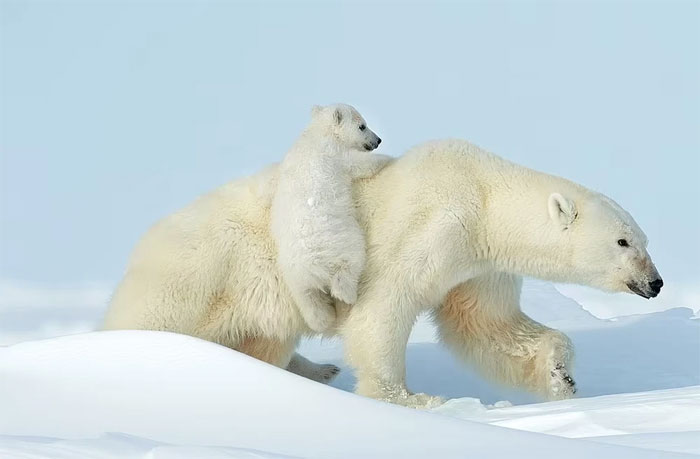The German photographer captures stunning images of a rare polar bear mother with three cubs playing in the snow.
Wildlife photographer Isabel Jauss from Germany has documented breathtaking images of a polar bear family.
Isabel Jauss tracked several polar bear families for weeks to capture images of these creatures with their pristine white fur.
The photographer visited various locations within the Arctic Circle, including Wapusk National Park and Baffin Island in Canada, as well as the Svalbard archipelago in Norway.




A mother bear and her fluffy white cubs playing in the snow.
“Polar bears are one of my favorite animals. I researched thoroughly the locations where I could find bear families,” the photographer remarked.
The images captured by Isabel Jauss show a mother bear who gave birth to three cubs in a rare triplet birth for polar bears. The mother and her fluffy white cubs are seen frolicking in the snow.
Like other apex predators, polar bears have low reproductive rates. Typically, polar bears give birth to just one or two cubs at a time. The cubs stay with their mother for about two years.
Females reproduce about every three years and only begin breeding when they are around five or six years old.
Isabel Jauss expressed, “When I saw the rare triplet birth, I couldn’t believe my luck; they were playing with their mother. As soon as I learned that the mother and her cubs had left their den, I quickly put on a warm coat, sturdy boots, and headed out into the freezing weather.”
Polar bears are at risk of extinction due to habitat loss and melting ice in many areas around the world. In the harsh Arctic environment, they are one of the few species that can survive.
Ice loss due to climate change directly impacts polar bears’ ability to hunt and survive. Bears need ice to reach their prey, such as seals. The ice in the Arctic Ocean shrinks during the summer as temperatures rise and then forms again in winter.
Due to climate change, global warming is causing ice to melt and become thinner. Without enough ice, seals cannot move on the ice, making it impossible for polar bears to hunt.
In recent years, the ice has retreated far from the shore, forcing bears to drift into deeper waters, sometimes nearly 1.5 meters deep, in search of food and to hunt prey.


















































